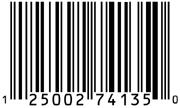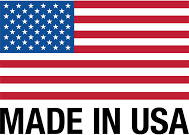Barcode Tracking System
Mar 1st 2013
 CabinetDoors.Com’s proprietary barcode inventory tracking system doesn’t just track
CabinetDoors.Com’s proprietary barcode inventory tracking system doesn’t just track
Work in Process and inventory; it also schedules the factory, measures individual productivity, schedules overtime, evaluates waste by lumber supplier, and organizes shipping.
At some point every manufacturing business realizes that they need to streamline inventory control. We make Cabinet Doors, and for us the need for streamlining was the gradual realization that our inventory of Work in Process seemed to be getting more inaccurate every month.
After analyzing our inventory tracking methods, the problem became obvious; the process of taking the inventory just took too long.
Each day we started the manual process of physically identifying the location of each component, of each order in process. The problem with that system was that we had simply outgrown it. By the time the inventory was completed, 95% of the product inventoried had already moved and was no longer where the inventory said it was.
The solution was a straight-forward barcode tracking system. We decided to develop the system in-house, so we could modify and enhance it in-house also.
The task of selecting the barcode scanners and determining which Barcode Symbology to use, was influenced by our environment. The scanners needed to be durable and dust tolerant, the wands needed to be drop resistant, and the symbology needed to be true-type so we could expend it.
Finding the scanners was no problem from the dusty environment standpoint. All the scanners we tested performed well even when buried in dust.
Selecting the Wands required a little more time. Laser wands were too fragile and usually broke when dropped, and we also found that the wands would be dropped often. We decided on inexpensive LED Wands with coiled cords. Dropping these wands is also usually destructive, but if the coiled cord is anchored at a point where the Wand cannot reach the ground, the coiled cord will relieve the shock from the drop and prevent damage.
There are many barcode symbologies available on the internet and the choice boiled down to the amount of data we wanted the barcode to store. In our case we needed to store only an invoice number, so we chose a simple barcode. We selected Barcode 39, also known as Barcode 3-of-9. It is True-type, so it can be scaled when printing. It’s free, and it’s short and simple. The vertical lines are spaced so that even a dusty cutlist can be read without problems. It can be read by scanning either forward or backward, and it starts and stops with an asterisk “*” so programming is easy.
We use Excel to handle our inventory so the logical choice was to use Visual Basic for the programming. The Visual Basic for Applications that is included with Excel, was a little light for this task so the actual communication programming was written with Microsoft’s Enterprise version of Visual Basic.
While the programming was not complex the debugging required more time. It turned out that large electric motors starting and stopping sometimes introduce some noise into the Cat-5 network wiring and this noise can cause some interesting barcode scanner behavior. Once we realized we had an electrical noise problem, we added some error detection to the software. This started as a simple check-sum routine, and the electrical noise problems stopped when the error checking started.
The next problem was more interesting and more difficult to locate. The problem popped up every day between 2:00pm and 2:30pm and crashed the system. We programmed a scan-log where every scan (even failed checksum scans) was logged into a file.
After just a few days it became obvious that the scan that was killing our system was a string of numbers much longer than our expected scans.
Here is where we learned something about human nature. We learned that some people just can’t resist scanning a barcode…any barcode.
Every day between 2:00pm and 2:30pm the Chuck Wagon truck would stop at our facility and the group would take a break and buy a snack. And every day somebody would scan the barcode on their candy bar into our Inventory Tracking System.
Once we found the problem, and stopped laughing, it was a simple program change to ignore any scans of unexpected length or content.
After a few months of totally accurate and totally current inventory tracking, we realized that our new system was capable of doing other things besides just tracking work-in-process. We realized that by scanning both before and after a process, we could measure the time required and, therefore measure productivity against a standard. Then by offering a bonus for higher productivity, we experienced a significant increase in productivity along with a decrease in overall labor costs.
The next step was to link the Inventory Tracking System into our lumber yields.
Because the Inventory System has received the barcode scan, it knows the wood type being used and the order being built. With that information the program can calculate the expected weight of the entire order being built. So, if we were to weigh the waste generated on that job and enter it into the system, we can calculate the yield percent for that particular order. Again, by offering a bonus for yields higher than standard, we realized a yield increase, and another decrease in costs.
This information had some huge implications for our wood purchases. We found some very significant differences in yield between different suppliers, and in several cases we increased purchases from one source while decreasing purchases from another.
The result was another cost saving for our company, as well as an overall improvement in our yields. After we shared our yield experiences with all our suppliers (and let each supplier see the entire report), the yields from every supplier went up. This generated another cost savings for cabinetdoors.com.
Our conclusion is that a computerized Inventory Tracking System is a very good investment that noy only cut our costs, but it allowed us to lower prices on several cabinet door styles and in several wood types.
Return to cabinetdoors.com/Blog
Visit the Cabinetdoors.com website.

